Photos from 1970s show life in Manchester's Moss Side
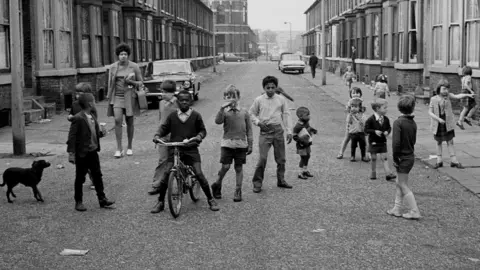 Daniel Meadows
Daniel MeadowsMoss Side has long been associated with drugs, gangs and violence. But a collection of rarely seen images paint a very different picture of one of Manchester's most notorious neighbourhoods.
When Daniel Meadows moved to the city in 1970, he had a less than complimentary view of it.
"It was a big dark city, it was very dirty, it was damp, it rained all the time.
"But it was full of the most wonderful mix of people."
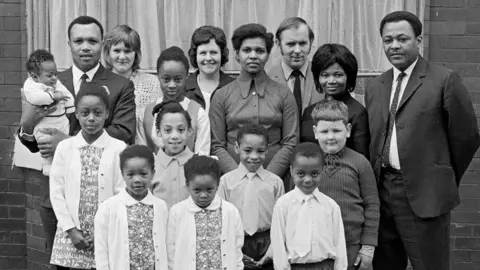 Daniel meadows
Daniel meadowsIt was a sharp awakening for the aspiring photographer, who recalls having a "protected, sheltered childhood" in Gloucestershire.
"By the time I was 18, I was exploding with curiosity about the world and I found myself in Manchester - I might as well have landed on the moon really."
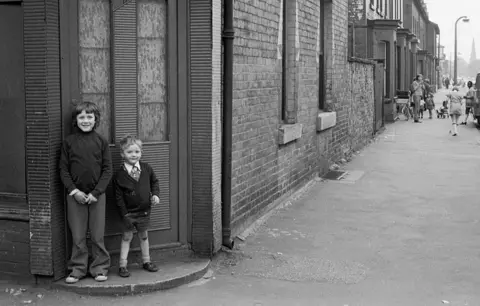 Daniel Meadows
Daniel MeadowsHe based himself in Moss Side "because it was cheap" and close to his art school at the former Manchester Polytechnic.
"I found myself living in the middle of this place where something epic was happening - they were completely bulldozing the place."
 Daniel Meadows
Daniel MeadowsDemolition in Moss Side was part of a nationwide slum clearance of Victorian terraces, where the houses were described by the area's former Conservative MP, James Watts, as "unfit for human habitation".
It made way for new accommodation and while some residents remained, many were relocated to other parts of the city or chose to move.
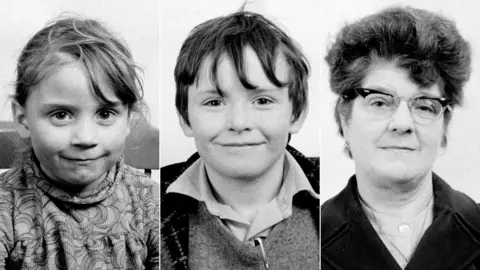 Daniel Meadows
Daniel MeadowsProf Gus John joined other local figures in campaigning against the destruction while working at the University of Manchester.
"The houses were very sturdily built and could have been renovated with some help from government… the area could have been spruced up.
"What they were doing was not just demolishing old houses, they were demolishing communities - there never was that sense of integrated community identity [again]."
 Daniel Meadows
Daniel MeadowsThe make-up of the neighbourhood included families of Irish, Polish, Asian and African-Caribbean origin - a "good spread" with a "high level of integration", Prof John said.
"The sense of mutual collaboration on all kind of issues... was absolutely fantastic.
"There were, and still are, people of all dispositions living in Moss Side, people who propped up the health service, people who propped up the industries in Trafford Park."
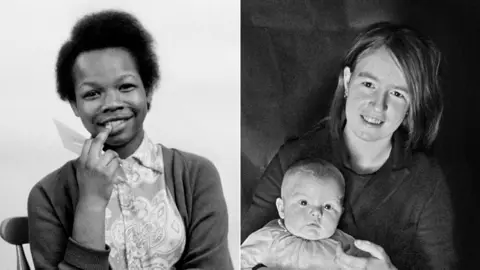 Daniel Meadows
Daniel MeadowsKeen to document life in Moss Side, Mr Meadows rented a disused barber's shop in 1972 and set up a studio where residents could get their picture taken for free.
He also took snaps on the streets, with curious children edging into shot and people, both young and old, neatly turned out despite the deprivation.
Many women were seamstresses and tailored stylish outfits for their daughters.
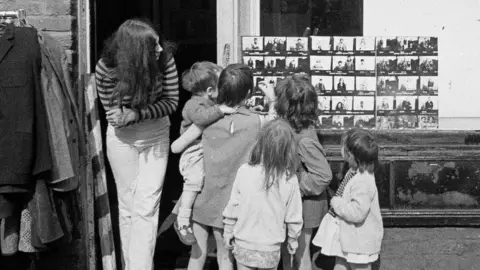 Daniel Meadows
Daniel Meadows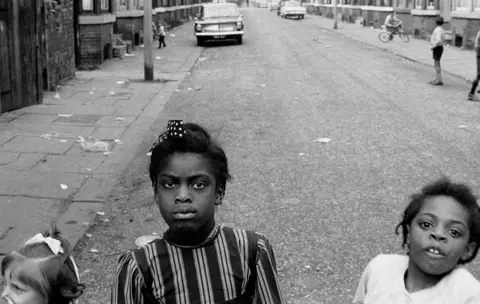 Daniel meadows
Daniel meadows Daniel Meadows
Daniel Meadows"Most of the parents had high aspirations for the young people," said Prof John, adding that there were several youth clubs and active churches.
"They had a thriving community... and a much greater level of economic activity among that population than you would find now."
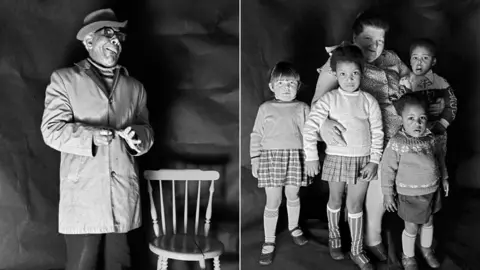 Daniel Meadows
Daniel MeadowsFormer resident Christine Henry said: "It was more friendly… if you were going out you would ask a neighbour to take a child in, or they would come to your house.
"I've still got friends [from then] - their kids call me auntie, my children call them auntie, we look at each other as family… we look at each other as sisters."
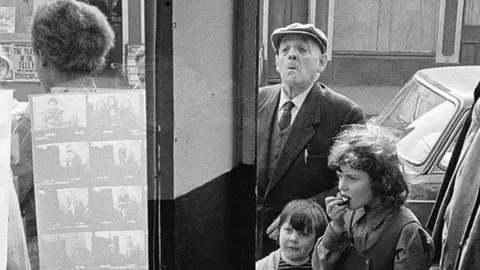 Daniel Meadows
Daniel MeadowsLocal families struggled financially but affordable housing in Moss Side provided a rare opportunity to own a home.
Former resident Freddie Crooks recalled the demolition as a "heartbreaking" experience.
"The thing is [our home] was a beautiful house… with enough space for a couple and six children."
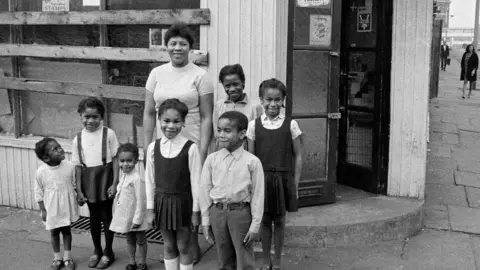 Daniel Meadows
Daniel Meadows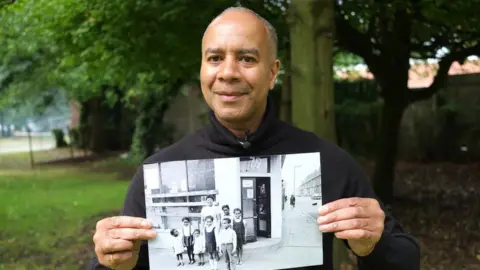 Daniel Meadows
Daniel MeadowsProf John believes the destruction of the houses and by extension, the communities, contributed to the headline-grabbing crime of the 1980s onwards.
"There was something quite toxic about the way in which people were expected to live on those [new] estates - it was like herding people.
"You had to walk miles to a shop, there were no facilities for integrating people - no community centres, for example.
"The decision-makers thought that by simply renewing the physical infrastructure, they would actually be improving communities, but quite the opposite happened."
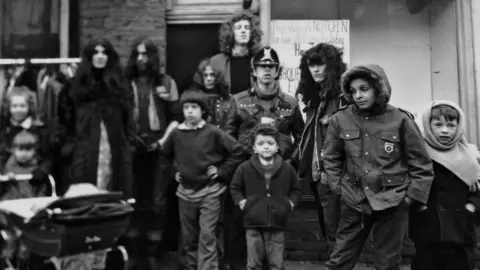 Daniel Meadows
Daniel Meadows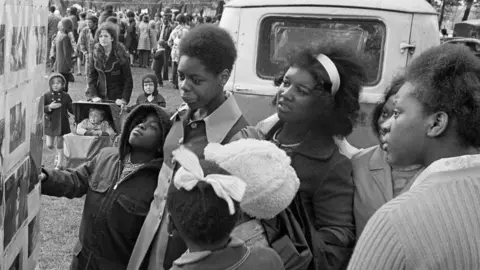 Daniel Meadows
Daniel MeadowsMr Meadows held his first exhibition of photos showing life in Moss Side at the inaugural Manchester Caribbean Festival in 1972, nailing his pictures to a tree at Alexandra Park.
He continued to document everyday life, taking pictures as he toured England in a bus, which were later exhibited at Tate Britain.
Over the summer, he returned to the festival to meet some of the subjects he photographed 45 years ago.
"Sometimes it got too much negative press," he said, reflecting on the escalation of crime in Moss Side after he left.
"Things happen elsewhere as well but they just concentrated too much on this part of it," he said.
"But I'd like to think that's the past."
See the full report on BBC Inside Out North West on BBC One at 19:30 BST 16 October.
